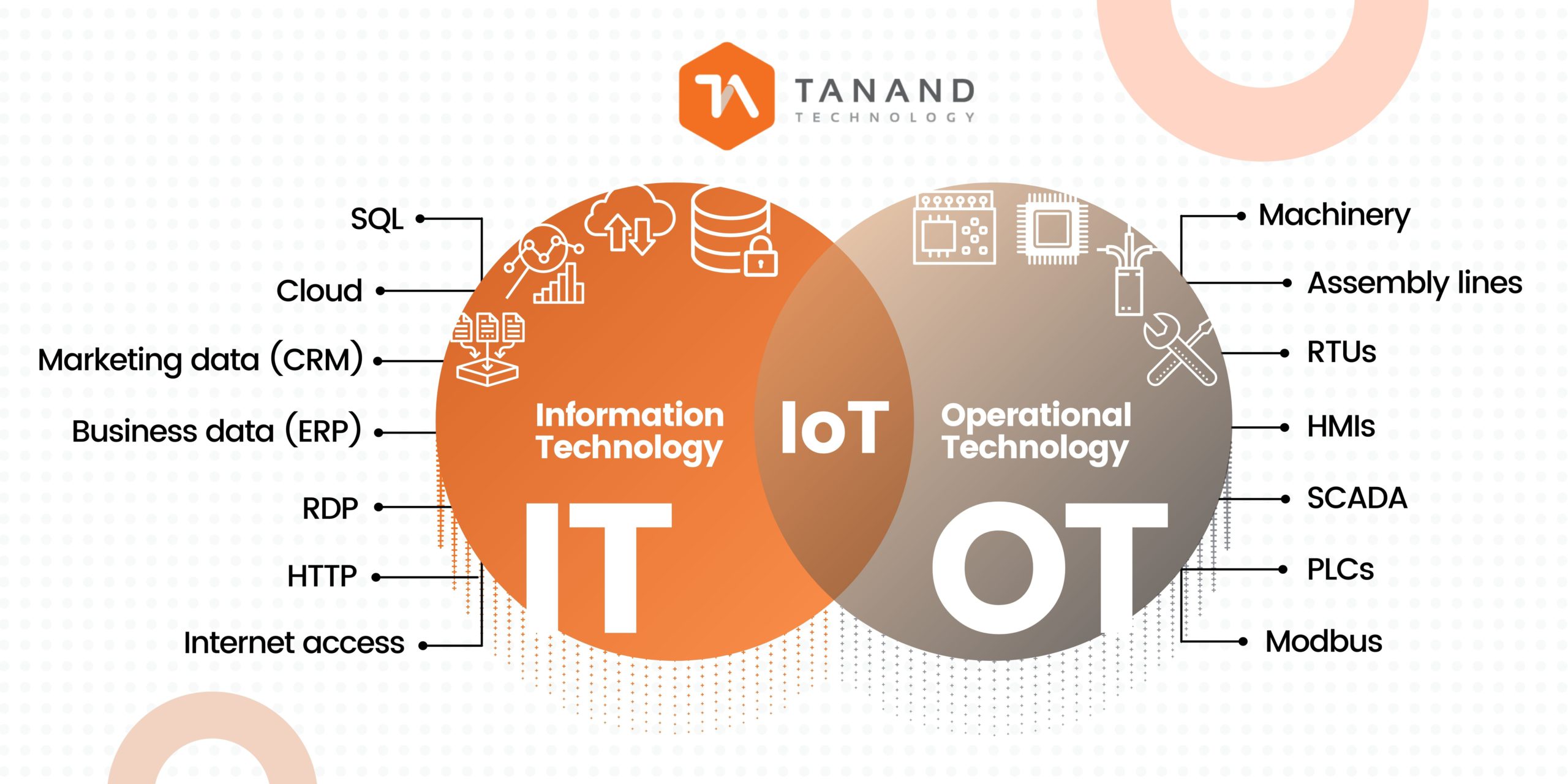AUGUST 10, 2021 | INFORMATION TECHNOLOGY, OPERATIONAL TECHNOLOGY, EDGE COMPUTING, IOT, MANUFACTURING, ENTERPRISE SOFTWARE, MACHINE LEARNING
As new technology brings operational hardware online, the border between Information Technology (IT) and Operational Technology (OT) is blurring – but what is the difference between IT and OT in the first place?
In summary:
– IT is concerned with data, in other words, IT is in charge of digital data flow.
– OT, on the other hand, is concerned with machinery, which means OT is in charge of the operation of machinery and the physical processes that carries them out.
– A useful comparison to describe their difference is: while IT happens in the office and is more often associated with software, OT happens on the production floor and is more often associated with hardware.
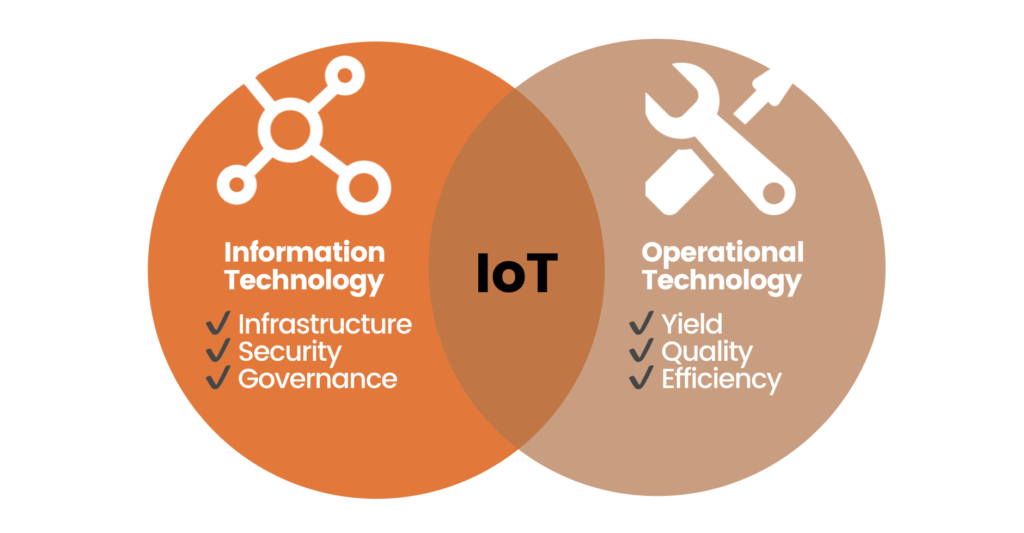
It’s important for key decision-makers in the manufacturing industries to comprehend the differences between IT and OT and how each domain can interrelate. Given the rapid development of Internet of Things (IoT) and its broad acceptance across the industry, manufacturers ought to spend on next-generation solutions that can bring IT and OT together to better analyze and control critical production asset and processes.
Information Technology (IT)
Simply stated, information technology (IT) is the use of the network, storage, and computing resources to generate, manage, store, and transport data within and between companies.
Some prominent features of IT includes:
1. IT has the ability to be reprogrammed.
While some technologies are built to execute a specific set of tasks (e.g. a piston), IT can be changed, enhanced, and reprogrammed in a variety of ways to suit changing networks, applications, and user requirements.
2. Other than software, IT also associates with hardware that relates to connectivity.
IT not only includes software, such as applications, operating systems, and virtualization capabilities, but also hardware, such as computers, physical servers, network equipment and so on.
Operational Technology (OT)
Operational technology (OT) can be defined as the technology that analyzes particular systems and technologies inside business operations at the most fundamental level.
Unlike IT, the hardware and software associated with OT are typically:
– intended to accomplish very particular tasks, such as regulating temperature, evaluating mechanical performance, activating emergency shutoffs, and so on;
– accomplished using industrial control system (ICS) and supervisory control and data acquisition (SCADA).
A prominent feature of OT is that OT requires human intervention at certain critical points.
OT offers a fast and direct, yet physical method, such as a switch, a steer level, or a big red button, for workers on the manufacturing floor to carry out specific operation of machineries, such as adjusting temperature or humidity level, turning off equipments etc.
On the other hand, IT is able to execute essential activities without the need for continuous human involvement – as long as the processes remain within pre-programmed parameters.
The Convergence of IT & OT – Internet of Things (IoT) Technology
Although IT and OT have traditionally been separate aspects of contemporary companies, the boundaries between the two are melting and changing due to a process known as IT-OT convergence. Since IoT technology connects assets that aren’t usually linked to the internet — manufacturers looking to transition into a smart business may now generate new efficiencies by using the flexibility and connectivity expertise of IT to the physical assets of OT systems.
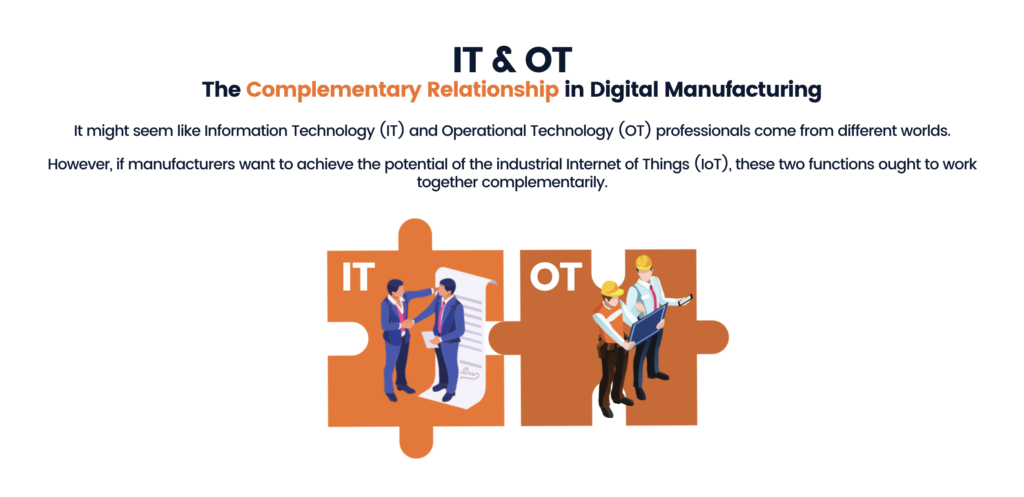
IoT can convenient production floor operators by maximizing visibility of machine performance and control of machine utilization.
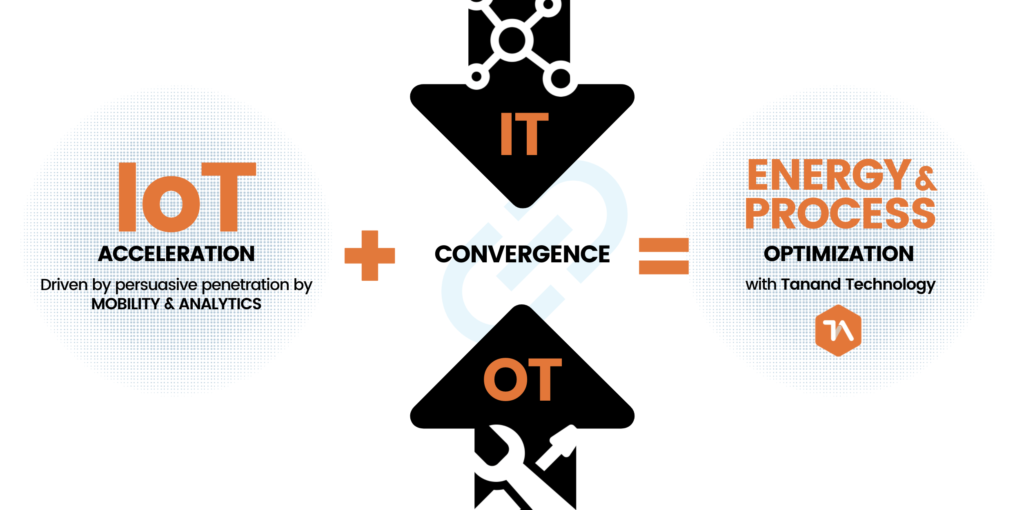
Using IoT to Achieve Energy & Process Optimization in Tanand
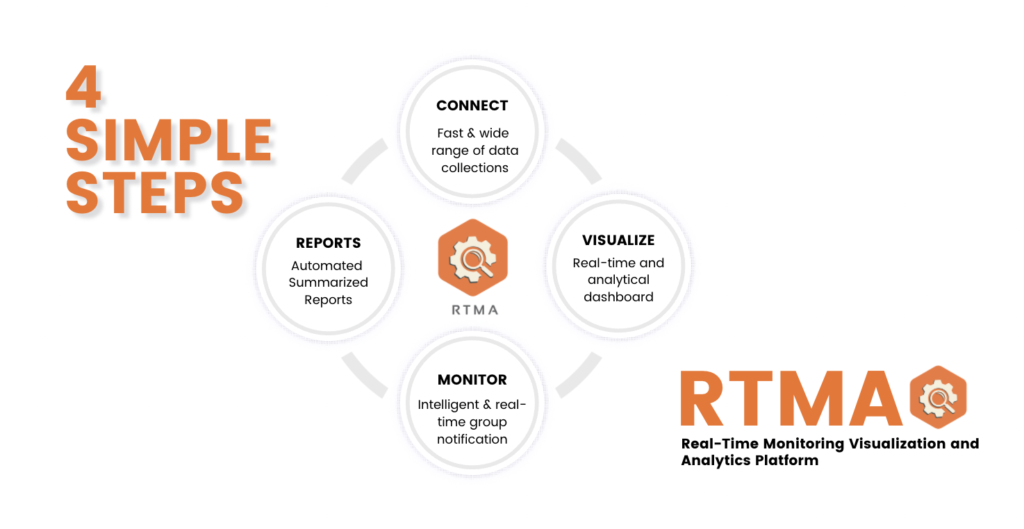
A plug-and play solution enabled by IoT and deeper analytics tailored for energy and production monitoring to improve downtime management, manpower, quality of service and reduce costs of operation.
RTMA provides accurate insights for faster decision making, empowering your production team to:
– Remotely monitor & centralize all your data in real-time to maximize facilities and resources
– Stay informed with instant notifications by tracking server / router / application / machine downtime to know when certain thresholds or parameters are breached
– Get visual feedback into energy consumption and production performance by combining and analyzing machine, energy, process data, PLC, SCADA, and IoT sensor data
– Achieve predictive condition monitoring by implementing a demand-based maintenance scheduler tool that automatically prioritizes maintenance, as well as serves as a KPI measuring tool to evaluate maintenance

